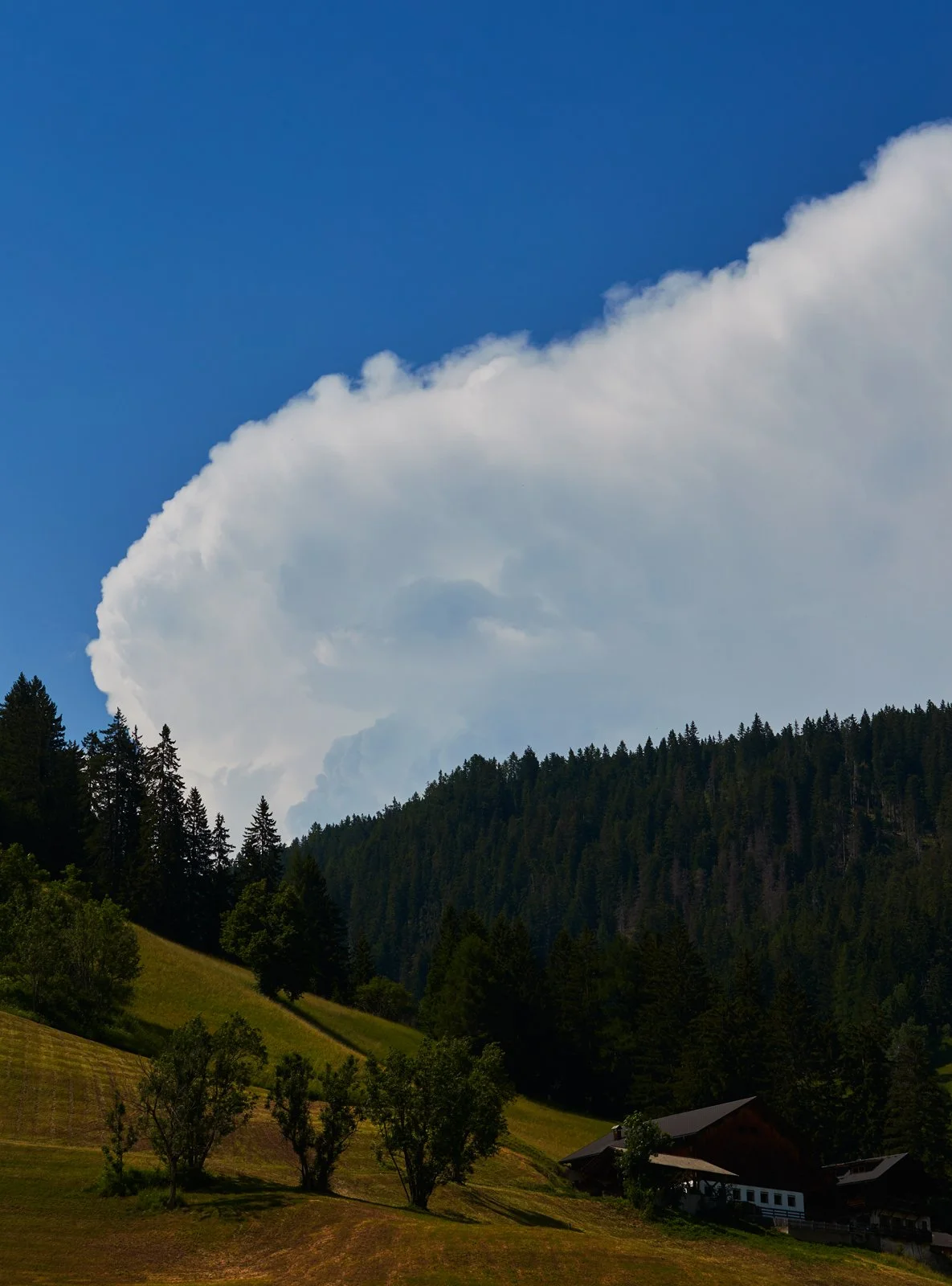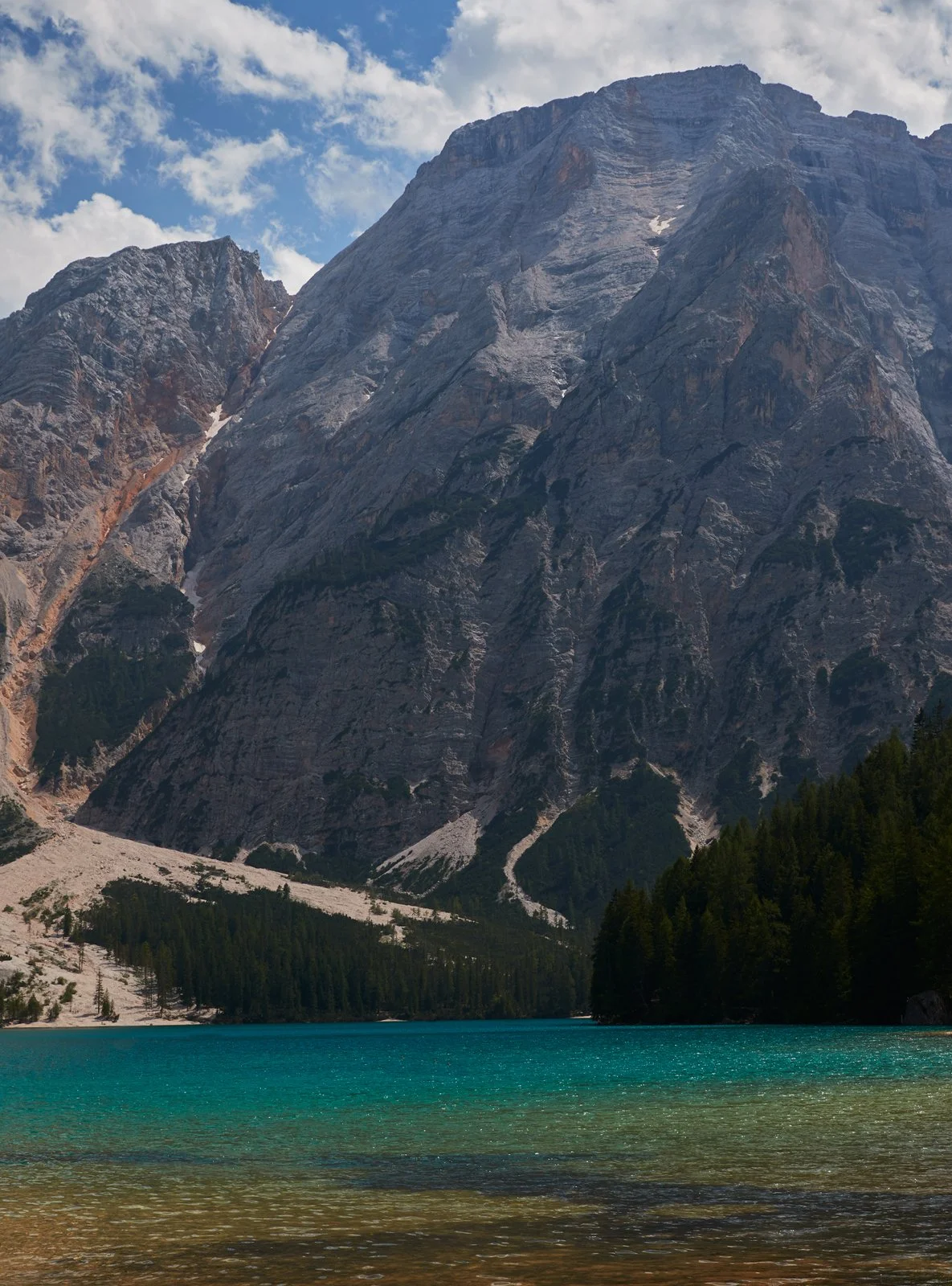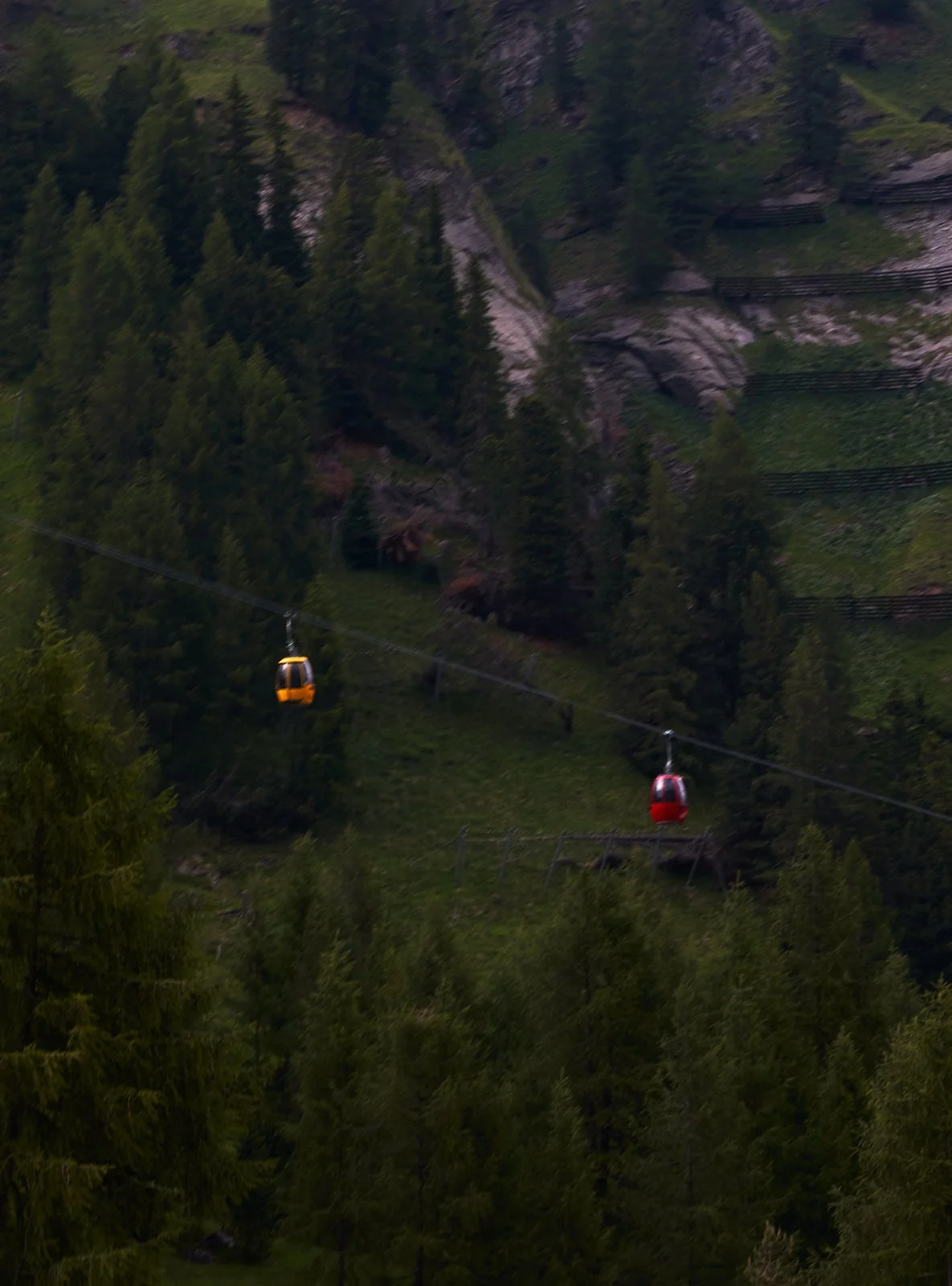GUIDE / DOLOMITES / MONTI PALLIDI
“There are mountains, and then there are the Dolomites”, Le Corbuiser’s succinctly summarized his appreciation of the Dolomites, located just south of the main mountain chain of the Alpes. Their nine mountain ranges are shared between three Italian provinces: South Tyrol, Trento and Belluno, and the region itself is often divided into two subcategories: the Western and the Eastern Dolomites, separated by a line following the Val Badia – Campolongo Pass – Cordevole Valley axis.
¨As the tectonic plates shifted, what was once under water gradually became large mountains, with stone and cliffs in strange shapes and unusual colours. This is why the Dolomites are so different from any other kind of mountain, and why they are considered the most beautiful mountains of the world.¨
Lago di Braies
Their modern name originates from Déodat de Dolomieu, a geologist who carried out the first mineralogical-chemical analysis of the mountain rocks. Towards the end of the 18th century, he discovered that the mountains consist of magnesium-rich limestone, which is what gives them their pale colour (they are often referred to as the “pale mountains”, or “monti pallidi” in Italian). The explanation can be found in the earth’s geological development: more than 50 million years ago, the mountains was located much further south, in the earth’s tropical zone and part of a giant coral reef under water. As the tectonic plates shifted, what was once under water gradually became large mountains, with stone and cliffs in strange shapes and unusual colours. This is why the Dolomites are so different from any other kind of mountain, and why they are considered the most beautiful mountains of the world.
Within the Dolomite Moutains, there are 42 peaks that reach over 3,100 metres, and an additional 90 peaks that reach over 2,200 metres. Most are in a shade of grey-white, over time transformed into a fine-grained carbonate mineral (named “dolomite”, after its scientific discoverer). The cliff walls of layered sediments stand in contrast with the dense, green forests, deep valleys and alpine pastureland. 40 percent of the region consist of mountain crags, snowfields, boulders and scree. In the winter, it is a popular ski destination, but it is almost more beautiful in summer, when the waterfalls and streams flow through the landscape.
¨A particular light phenomenon of the area is “enrosadira”, beginning at dusk when the sun begins to set, and the sky turns into a glowing field of red and pink nuances, reflected in the pale mountains. ¨
The reason for Le Corbusier’s distinction between the Dolomites and other mountains – he also claimed that this area was the most beautiful example of nature’s own architecture – is in large part due to the unique combination of dolomite and crystals, glowing in different shades of white, grey and pink, together with the sculptural shape of the mountains. To drive a car or to ride a bike in the Dolomites is similar to being inside a vertical maze with spectacular views and a landscape that shifts according to weather and time of day. A particular light phenomenon of the area is “enrosadira”, beginning at dusk when the sun begins to set, and the sky turns into a glowing field of red and pink nuances, reflected in the pale mountains.
¨Because of the dramatic mountain landscape, many parts of the Dolomites have been difficult to access, which is why people for centuries have lived here in relative peace, preserving their way of life and ancient myths and superstitions.¨
The highest peak is Marmolada (3343 metres), followed by Antaleo (3264 metres). On a clear day, the former can be seen from as far away as Venice. Because of the dramatic mountain landscape, many parts of the Dolomites have been difficult to access, which is why people for centuries have lived here in relative peace, preserving their way of life and ancient myths and superstitions. The local legends often refer to the Dolomites as the home to supernatural elements, including witches, dwarfs with magical powers, ogres and fairies. It is bad luck to leave your front door open, as this means risking getting struck by an ogre or risking the curse of a witch. The paleness of the mountains is explained in local mythology not through geo-history but as related to the homesickness of a princess, who moved there from the moon to live with her prince. To alleviate her homesickness, the night gnomes wove the moon light and wrapped it around the mountains, so that they would resemble the moon landscape. Ever since, they have been as pale as the moon. And the reason why the Lago di Carezza still glow with a luminous green is because of a clumsy wizard, who one day caused a rainbow to collapse into the lake. Another lake, Lago di Braies on the northern edge of Parco Naturale di Fanes-Sennes-Braies, is said to hold the gateway to another dimension, accessible only when the moon is full, when the mountains open up and a boat suddenly will appear on the otherwise still lake.
Lago di Braies
Lago di Braies
Lago di Braies
Many of the legends have told through generations in the Rhaeto-Roman language of Ladin, descendent from the Latin spoken by Roman legionaries who marched through these valleys thousands of years ago. Ladin evolved parallel to French and Italian, but has also traces of German in its pronunciation. Today, 30,000 people speak it, and Dolomite newspapers still include one page of news in Ladin.
¨The language of Ladin, inspired by both Latin and German, is representative of how the Dolomite cultural heritage reflects the cultural development of this part of Europe. ¨
The language of Ladin, inspired by both Latin and German, is representative of how the Dolomite cultural heritage reflects the cultural development of this part of Europe. Though part of Italy, the local culture has strong Germanic influences (noticeably not least in that many towns have both Italian and German names, in addition to Ladin ones) and is more practical and logical. Historically, there have been tensions between the Italian and Austrian communities, but over time, this has subdued. Until 1918, Bolzano (or Bozen in German) was an Austrian town, and in 1927, it became the capital of the province. In 1948, it was granted even greater freedom, as the South Tyrol (or Alto Adige in Italian) region was granted autonomy in 1995, forming a semi-independent area with borders corresponding with the old country of Tyrol, even having its own liaisons with the European Union.
European history has always been marked by shifting borders and the continuous dialogue and movement of people between neighbouring countries. Both during wartime and peace, people have communicated, shared stories and traded with one another, regardless of where the border has been placed by the rulers. The closer to the border, the more blended is the culture. This is particularly true of the Dolomites, which holds many paths that connect the north with the south. This mix, or being in-between cultures, is noticeable not only in language and politics but also in architecture, food, and customs, as well as in many small details in everyday life.
The mountains influence everything in the Dolomites, from the serpentine-roads and breath-taking views to the distances you have to travel to get from one village to another. Even though there are a number of villages and towns (one of the most beautiful being Trento), the reason to visit is to discover the wonders of the nature, from the forests and lakes to the mountain peaks and cliffs. There are ten long-distance footpaths that traverse the Dolomites, numbered 1 to 10, the most popular being Alta Via 1 in the eastern Dolomites, which is 150 kilometres long, running from Pragser Wildsee to Belluno. Along the way are huts where it is possible to rest overnight. Those with a more adventurous inclination might prefer mountain climbing, hiking, cycling or paragliding.
Azienda Agricola Foradori
Trento
Trento
Every year, in the first week of July, the single-day road bicycle race Maratona dies Dolomites is arranged, with 9,000 cyclists taking over the roads, that are closed for the particular day. Twice a year, Sellaronda Bike Day is organized, again in collaboration with the region, that closes down traffic for this particular event. The Giro d’Italia was first organized here in 1937, and has been back more than 40 times since.
Many, however, come here to do as little as possible – the Dolomites are well known for their many excellent spa hotels, where people check in for an extended stay, for several days or even weeks, relaxing in this secluded area, away from the rest of the world.
To stay
Spa and wellness overlooking the town of Merano.
Via S. Caterina 14
39010 Avelengo
Italy
+39 0473 279335
With only ten bedrooms, this 100 years old villa, with heated outdoor pool, is a perfect place to relax. Adults only.
Via Andreas Hofer 8
39011 Lana
Italy
+39 0473 051051
A classic Dolomites-institution was given a second chance by restauranteur Klaus Dissertori.
Via Macello 2
39011 Lana
Italy
+39 0473 051050
Only 20 minutes walk from the city centre of Merano, this castle hotel offers both relaxation and easy access to nearby places such as Verona, Venice and Lake Garda.
Via Theodor Christomannos 38
39012 Merano
+39 0473 231894
A comfortable stay in a hillside castle, complete with its own large, private garden. Offers half-board option.
Via Fragsburg 3
39012 Merano
Italy
+39 0473 244071
Just outside the Dolomites, an opportunity to stay in one of Europe’s oldest castles and part of the UNESCO world heritage.
Via Brandolini Brando 29
31030 Cison di Valmarino
Italy
+39 0438 9761
To eat and drink
Traditional local cuisine served in a ski lodge from 1938, reachable by cable car.
Stada Col Alt 1
39033 Corvara in Badia
Italy
+39 0471 836324
Saltriastrasse 13
3904 Selseralm
Italy
+39 347 836 8154
Run by the Muisner family, serves only local, homemade products.
Timberlodge ski lodge, served in Tyrolean loden dress.
Strada Altonn 18
39033 Colfosco
Italy
+39 0471 836024
The chef Riccardo Gaspari began as a cheesemaker, and still handcrafts his cheeses, served at his family’s farmhouse restaurant.
Passo Tre Croci
32043 Cortina d’Amezzo
Italy
+39 3687 008083
Perched on top a mountain cliff, AlpiNN offers spectacular views of the South Tyrol.
Kronplatz
39030 Marebbe
Italy
+39 0474 431072
To visit
Tre Cime di Lavaredo/Drei Zinnen
Three iconic mountain peaks and the symbol of the Dolomites.
Hike the Tre Cime di Lavaredo trail for the best view.
Lago di Braies/Pragser Wildsee
In summer, you can rent a car and enjoy view of the lake from the water.
Lago Di Dobbiaco
Another picturesque lake, less popular with tourists and thus not as crowded as Lago di Braies.
Puez-Odle natural park
The nicest mountain, with the most beautiful view, is Geisler Alm.
Lago di Sorapis
Beautiful lake, albeit slightly difficult to access as it requires a hike.
Marmolada
The highest mountain, also known as Queen of the Dolomites.
Passo Gardena/Grödner Joch
A very scenic mountain pass.
Passo Pordoi
The highest road in the Dolomites, with 28 hairpin bends.
Cortina d’Ampezzo
The most popular mountain resort in the Dolomites.
Lago di Misurina
Beautiful lake, close to Tre Cime di Lavaredo.






























